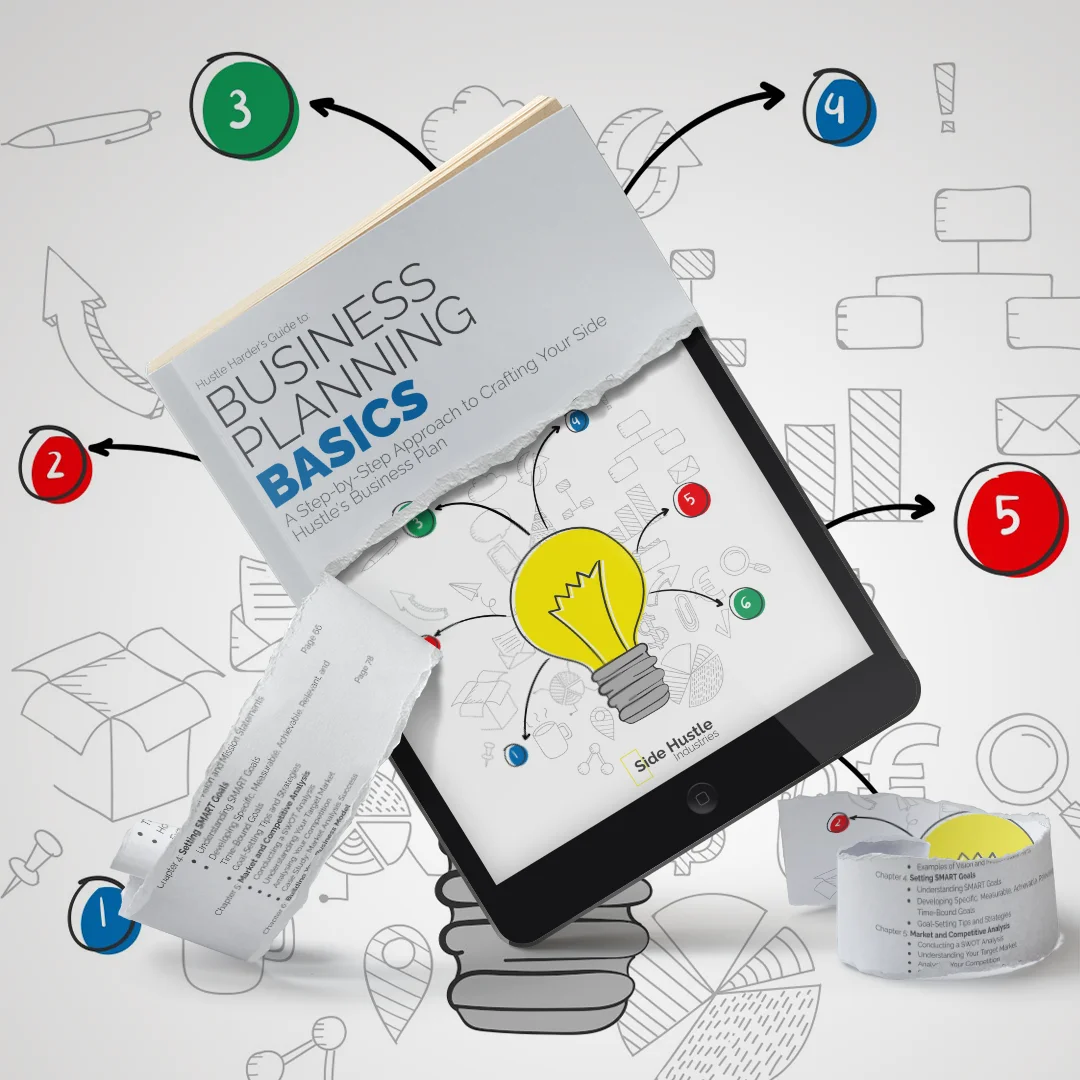
Writing an effective vision statement is an art that requires precision, inspiration, and a deep understanding of your business’s long-term aspirations. Your vision statement serves as the guiding star for your side hustle, illuminating the path to your entrepreneurial dreams. In this blog, we will delve into the process of writing a compelling and effective vision statement. We’ll break down the key components and provide practical tips to ensure that your vision statement fulfils its purpose as a source of inspiration and direction for your business.
Key Components of an Effective Vision Statement
Before we jump into the process of crafting your vision statement, it’s crucial to understand the key components that make up an effective vision statement. These components form the building blocks of a statement that can guide your business toward its long-term goals:
1. Conciseness:
An effective vision statement is concise and to the point. It should be brief and memorable. Avoid verbosity or jargon, as clarity is essential.
2. Inspiration:
Your vision statement should inspire and motivate. It should evoke a sense of purpose and aspiration, not only for you but for your team and stakeholders as well.
3. Futuristic Perspective:
A vision statement is forward-looking. It should cast a gaze into the future, typically five to ten years ahead, outlining your long-term goals and aspirations.
4. Specificity:
While concise, your vision statement should also be specific. It should be unique to your side hustle and not a generic statement that could apply to any business.
5. Values and Principles:
Your vision statement should reflect the values and principles that drive your business. It should convey what your business stands for and what it seeks to achieve beyond financial gains.
6. Aspirations:
Describe what your business aims to accomplish in clear terms. Whether it’s transforming an industry, revolutionising a product, or making a lasting impact on your community, your vision should encompass your loftiest goals.
7. Involvement of Stakeholders:
It’s valuable to involve your team and key stakeholders in the creation of your vision statement. Their insights and perspectives can lead to a more comprehensive and well-rounded statement.

Crafting an Effective Vision Statement
Now that you understand the components of an effective vision statement, let’s dive into the process of crafting one:
1. Reflect on Your Long-Term Goals:
Begin by reflecting on your long-term goals and aspirations for your side hustle. Think about where you want your business to be in five, ten, or twenty years. What impact do you hope to make? What legacy do you wish to leave?
2. Brainstorm Keywords and Phrases:
In a brainstorming session, jot down keywords and phrases that resonate with your long-term goals. These can include words related to your values, the impact you want to create, and the uniqueness of your business.
3. Seek Inspiration from Role Models:
Look to successful entrepreneurs and businesses that you admire for inspiration. Their vision statements can serve as examples and sources of ideas.
4. Involve Your Team and Stakeholders:
Collaborate with your team and key stakeholders to gather their input. Conduct discussions or workshops to collect their thoughts on the business’s long-term vision.
5. Write Multiple Drafts:
Begin writing draft vision statements. Don’t limit yourself to one draft; explore different approaches. Your first draft is unlikely to be your final statement.
6. Edit and Refine:
Review and refine your drafts. Ensure that the statement is concise, inspiring, specific, and reflective of your long-term goals. Eliminate any vague or jargon-heavy language.
7. Solicit Feedback:
Share your drafts with trusted individuals, such as mentors or business advisors, for feedback. They can provide valuable insights and suggestions for improvement.
Real-Life Example: Crafting an Effective Vision Statement
Let’s consider a practical example to illustrate the process. Imagine you’re running a side hustle that aims to provide high-quality educational resources to underserved communities. Here’s how you might craft a vision statement:
Reflection on Long-Term Goals:
You envision a future where every child, regardless of their background, has access to top-notch educational resources that empower them to pursue their dreams and aspirations.
Brainstorm Keywords and Phrases:
Keywords and phrases that come to mind include “equitable education,” “empowering children,” “breaking barriers,” and “endless possibilities.”
Inspiration from Role Models:
You draw inspiration from organisations like “Teach For America” and “Khan Academy,” which have made significant impacts in the education sector through their innovative approaches.
Involvement of Team and Stakeholders:
You conduct a workshop with your team and key stakeholders, including teachers and parents from underserved communities. Their input emphasises the importance of accessibility and empowerment.
Write Multiple Drafts:
You draft several versions of your vision statement, experimenting with different combinations of keywords and phrases.
Edit and Refine:
After reviewing your drafts, you decide to refine a specific draft that succinctly captures your aspirations while staying concise.
Solicit Feedback:
You share your refined vision statement with a mentor who provides feedback on its clarity and inspiration. You make some final adjustments based on the feedback.
The final vision statement might read:
“Our vision is to break barriers to equitable education, empowering children from underserved communities with endless possibilities and a path to their dreams.”
This vision statement reflects your long-term goals, values, and aspirations, and it is a concise, inspiring, and specific declaration that can guide your side hustle effectively.

Bringing Your Vision Statement to Life
Writing an effective vision statement is only the first step. To fulfil its purpose, you must actively integrate it into your business culture and operations. Here’s how to bring your vision statement to life:
1. Share it Actively:
Communicate your vision statement regularly with your team, stakeholders, and customers. Make it a part of your business culture.
2. Integrate it into Decision-Making:
Use your vision statement as a reference point when making decisions. Ask whether a particular choice aligns with your long-term objectives.
3. Celebrate Milestones:
When you achieve significant milestones or progress toward your vision, celebrate these moments with your team. Recognize the progress made.
4. Adapt and Refine:
Your vision statement can evolve as your business grows. Be open to refining and adapting it as needed to ensure it remains relevant.
5. Stay Committed:
Remember that fulfilling your vision may require hard work, dedication, and resilience. Stay committed to the long-term journey, even in the face of challenges.
Incorporating your vision statement into your business’s daily life and operations is essential to ensure that it serves its purpose as a guiding star. A compelling and effective vision statement can be a powerful motivator and a source of inspiration for you, your team, and your stakeholders as you navigate the entrepreneurial journey.

*Also available on Amazon in Kindle, Soft Cover & Hard Cover formats. —> Click Here.
